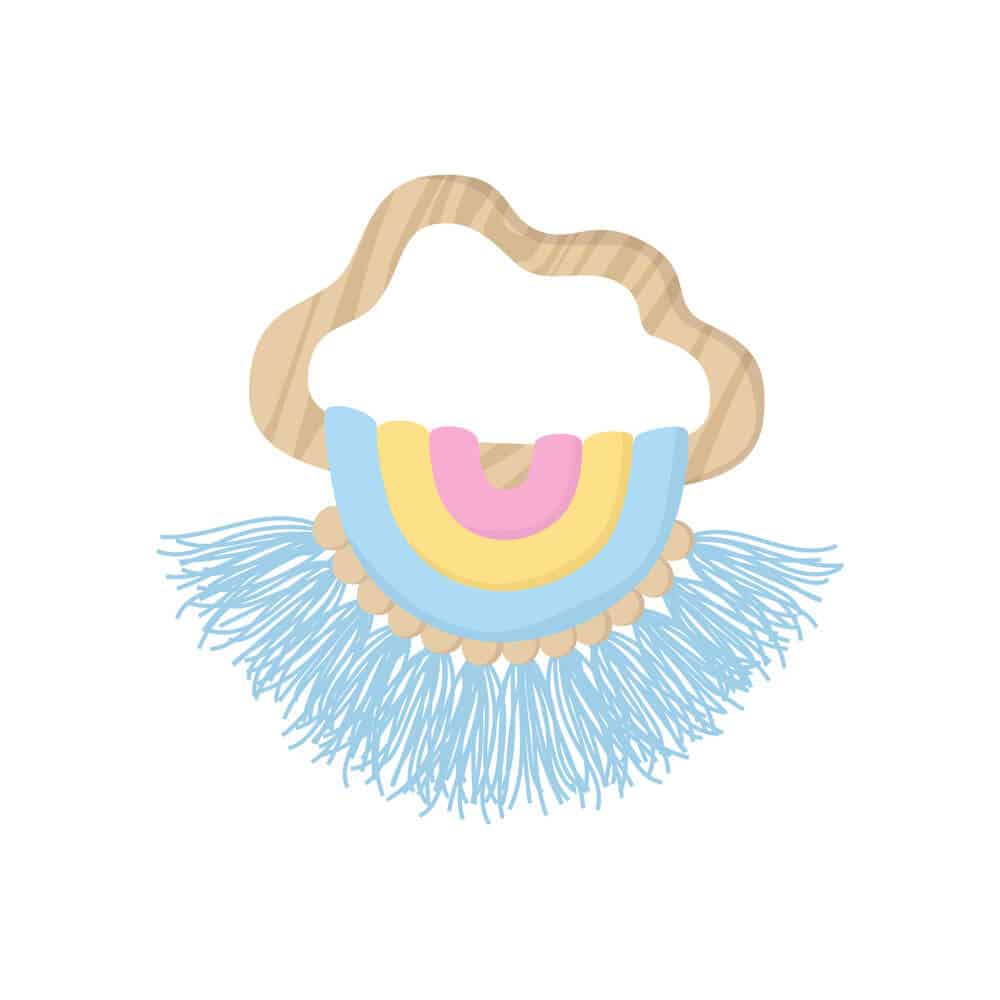Many of us are looking to turn toward zero-waste lifestyles and cut back on our impact on the planet.
whether that’s for the sake of the animals, the sake of ourselves, or the sake of future generations – or all of those things!
There’s growing awareness of the environmental problems we face, and if you’ve got a new family member, you might be wondering how to zero waste with a baby.
There are lots of things you can do to reduce your waste with a baby.
Some of the biggest tricks will be reusable diapers, buying second-hand toys, clothes, and equipment where possible.
Other reusables, such as cloth wipes instead of baby wipes and breastfeeding if you can, will also help you out!
Reusable Diapers
According to RealDiapers, disposable diapers take over 500 years to decompose in a landfill, which means they will outlive your baby by more than five lifetimes.
Many babies go through over 6000 diapers in just two years, and over 90 percent of those go into landfill sites to rot.
That’s a pretty huge problem, and when you consider how many babies there are around the world, it’s a bit mind-boggling to think about the tidal wave of unpleasantness sitting around in our waste sites.
Switching to reusable diapers is probably one of the absolute best things to do to zero waste with a baby.
You might wonder about the water and electricity used every time you have to wash these, but remember that creating a disposable diaper also has a massive cost in terms of water and electricity and fuel for transport and plastic for packaging.
Reusable is always better than disposable, and that’s certainly the case for diapers! Some parents do struggle to make the switch full-time, but even just having a few reusable diapers can make a massive difference to the amount of waste generated by your baby.
Buying Second-Hand
Have you thought about the advantages of buying second-hand?
- It’s cheaper
- It saves on manufacturing new products
- It saves old products from going into landfill
- It puts less money in the pockets of corporations and helps out charities or other people
- Baby things are often “lightly used” as babies grow so fast
- It’s good fun hunting for bargains!
We buy second-hand goods whenever we can. Dishwashers, clothing, furniture, books, toys – almost everything we buy can be got from second-hand pages or charity stores.
You can get many like-new items for very little money, but the most significant advantage is the savings to the planet.
Whenever you buy something new, no matter how “eco” it is, there’s a cost to the environment.
The company might be minimizing that cost, but the only true zero waste is when the item already exists, and there’s no hidden manufacturing cost out there.
The environment should buy a second-hand sleeper than to buy a brand new all-natural bamboo ultra eco-friendly sleeper.
Unless a company is able to run carbon neutral or carbon negative entirely, there are lots of hidden costs even in eco-friendly products.
A buy-less attitude is the perfect way to reduce your waste.
Before purchasing something, ask how you have managed in the past without it, and how it will improve your (or your child’s) life.
There are so many cute and beautiful things for babies, it is easy to get carried away and purchase unnecessary things.
Using Towels And Rags
It’s no secret that babies are messy, and if you’re anything like us, you’ll want a whole cupboard of rags and cloths.
You might find it easiest to mark ones for faces and hands, and ones for spills.
A separate set (clearly marked!) can become part of your changing table gear, and you might find that you prefer them to disposable wipes.
Many parents find that they clean messy behinds more effectively and quickly, and they can easily be dampened with water to simulate a wet wipe.
Some of the biggest problems with wet wipes include:
- Many have chemicals in them
- They block sewers and pipes if they are incorrectly disposed of
- They do not break down quickly in landfills (BigGreenSmile estimate that they could take over 100 years!)
- They contain plastic
- They are wrapped in plastic

You might then be wondering about flushable or biodegradable wipes.
These are options, but be aware that most “flushable” wipes simply mean that they will go down the toilet pan – not that they will dissolve in water.
They can still clog sewers and pipes. ThoroughlyModernGrandma says that wet wipes are responsible for 93 percent of sewer blockages.
To test if a wipe is truly flushable, put one in a glass of water, and a sheet of toilet paper in another glass.
Soak them for a few minutes, and then stir. See how differently the two behave and you might be convinced away from flushable wipes.
Depending on how they are made, biodegradable wipes may be a better option, but remember that if you’re putting them into a landfill, they won’t break down.
Landfills don’t offer the right conditions, and putting organic material in can lead to methane and CO2 being released.
All in all, washable wipes, like reusable diapers, are the best option!
Breastfeeding Vs Bottle Feeding
Obviously a more sensitive topic to many mothers, breastfeeding is best from a purely zero waste perspective.
You can even buy reusable breastfeeding pads, and of course, you reduce the waste of formula packaging and plastic bottles.
The InternationalBreastfeedingJournal looked into the environmental impact of formula and suggested that in just six countries, milk formula production led to 2.89 million tons of greenhouse gas emissions.
A kilogram of formula could result in the greenhouse gas emission equivalent of up to 14 kg CO2 by the time the child has consumed it.
Breastfeeding, by contrast, requires:
- No plastic packaging
- No production of dairy milk
- No fuel for transportation
- No factories
- No workers
- No hygiene standards/disinfecting requirements
- Minimal waste product
Of course, not all mothers can breastfeed, and many can’t breastfeed all the time. Even if you’re keen to minimize your waste, you should never feel guilty if breastfeeding doesn’t work for you and your child; the health and happiness of both of you must come first.
If you need to bottle feed part-time or full-time, you can reduce your impact by sourcing bottles from friends/family or buying glass bottles.
You can also get plastic-free teats. You could investigate breast pumps, bought second-hand or borrowed, as an alternative to formula.
Summary
Zero wastings with a baby can be a challenge, but it’s certainly possible.
If you are dedicated and think through decisions carefully, you can significantly impact how much waste you generate.
Remember that the golden rule of zero wastings is to reduce (buy less), reuse (see if you can repurpose or pass things on rather than throwing them out), and recycle (try and choose products that can be recycled when they reach the end of their useful life).
Share with friends, buy second-hand, and always opt for reusables when they are available, and you’ll be zero-wasting in no time!



